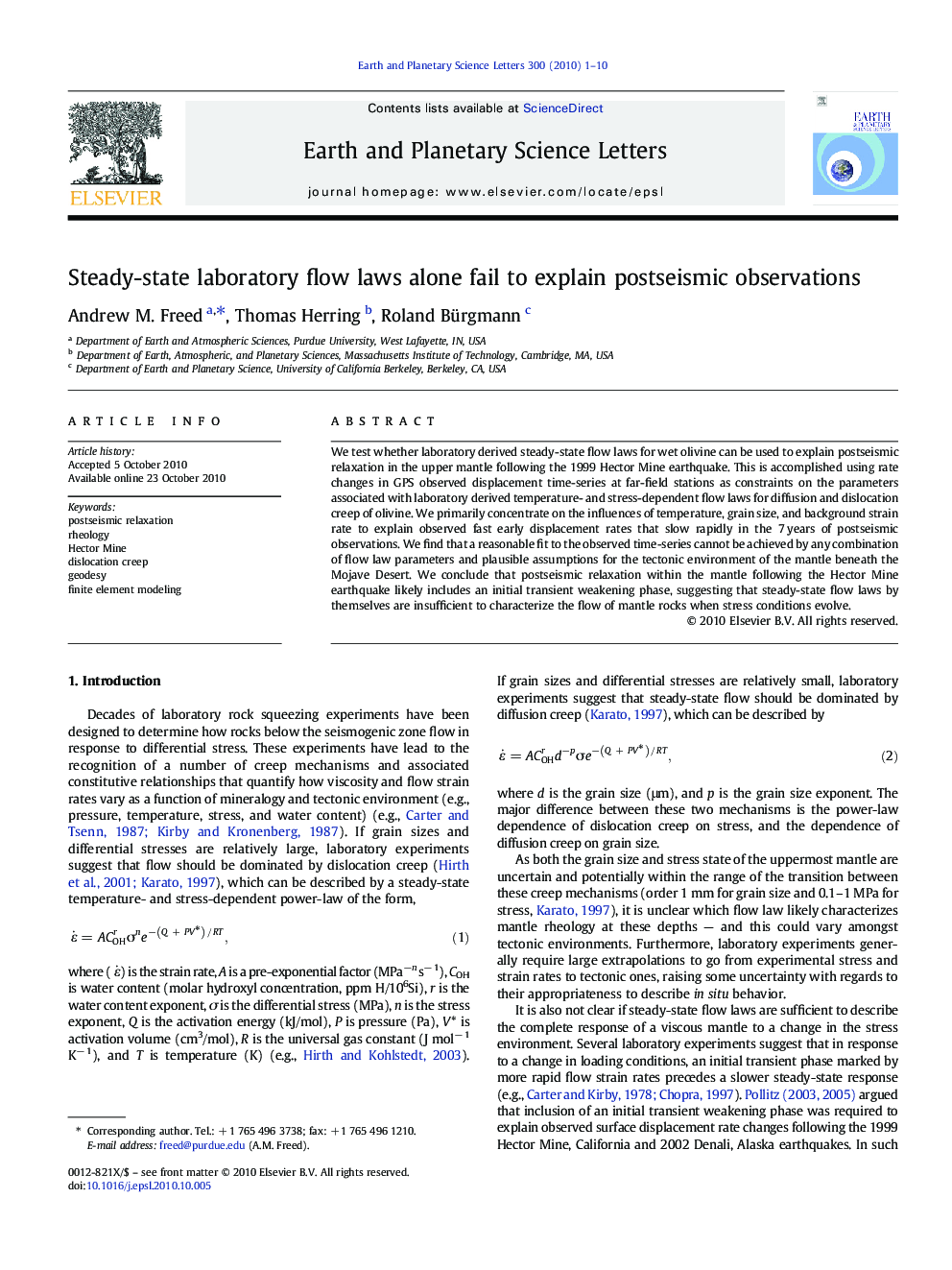| Article ID | Journal | Published Year | Pages | File Type |
|---|---|---|---|---|
| 4678223 | Earth and Planetary Science Letters | 2010 | 10 Pages |
We test whether laboratory derived steady-state flow laws for wet olivine can be used to explain postseismic relaxation in the upper mantle following the 1999 Hector Mine earthquake. This is accomplished using rate changes in GPS observed displacement time-series at far-field stations as constraints on the parameters associated with laboratory derived temperature- and stress-dependent flow laws for diffusion and dislocation creep of olivine. We primarily concentrate on the influences of temperature, grain size, and background strain rate to explain observed fast early displacement rates that slow rapidly in the 7 years of postseismic observations. We find that a reasonable fit to the observed time-series cannot be achieved by any combination of flow law parameters and plausible assumptions for the tectonic environment of the mantle beneath the Mojave Desert. We conclude that postseismic relaxation within the mantle following the Hector Mine earthquake likely includes an initial transient weakening phase, suggesting that steady-state flow laws by themselves are insufficient to characterize the flow of mantle rocks when stress conditions evolve.
